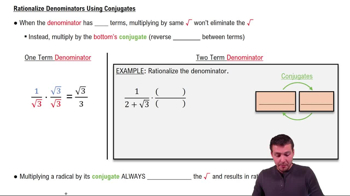Textbook Question
Add or subtract, as indicated. See Example 6.√45 + 4√20
608
views
 Verified step by step guidance
Verified step by step guidance Verified video answer for a similar problem:
Verified video answer for a similar problem:



 2:9m
2:9mMaster Introduction to Trigonometry with a bite sized video explanation from Patrick
Start learning